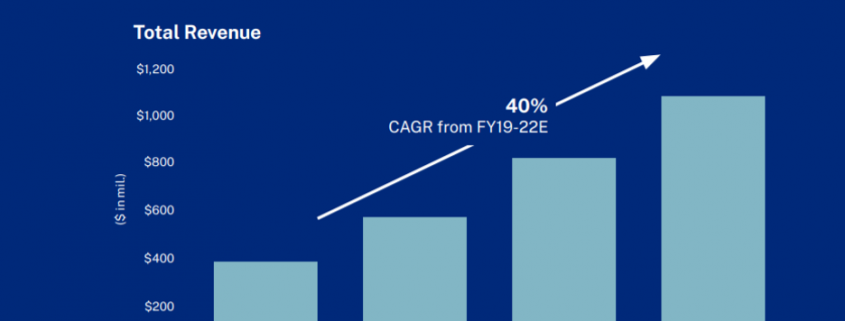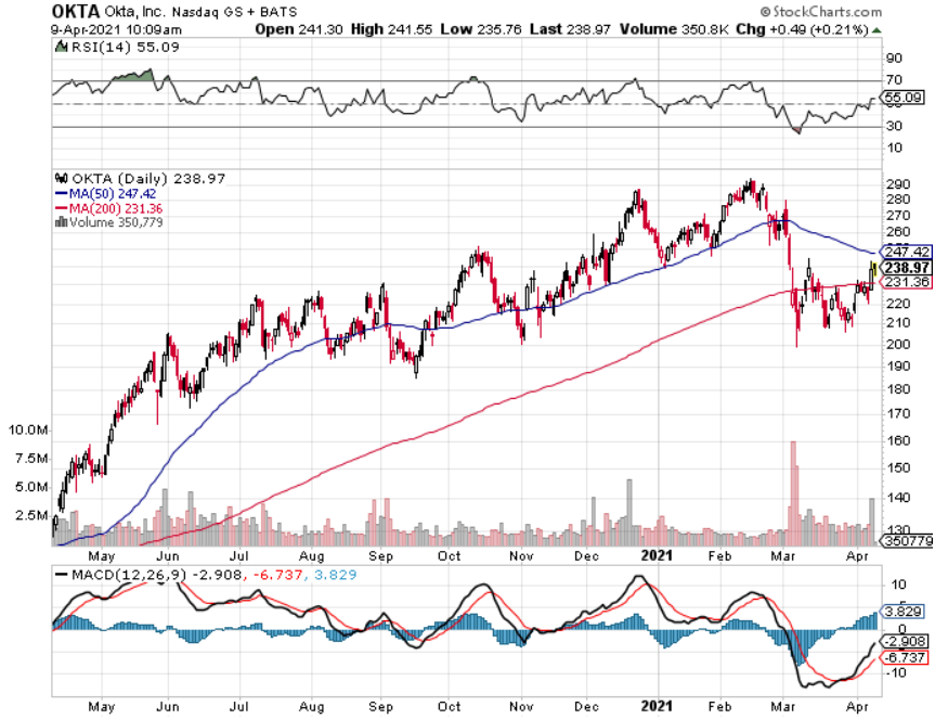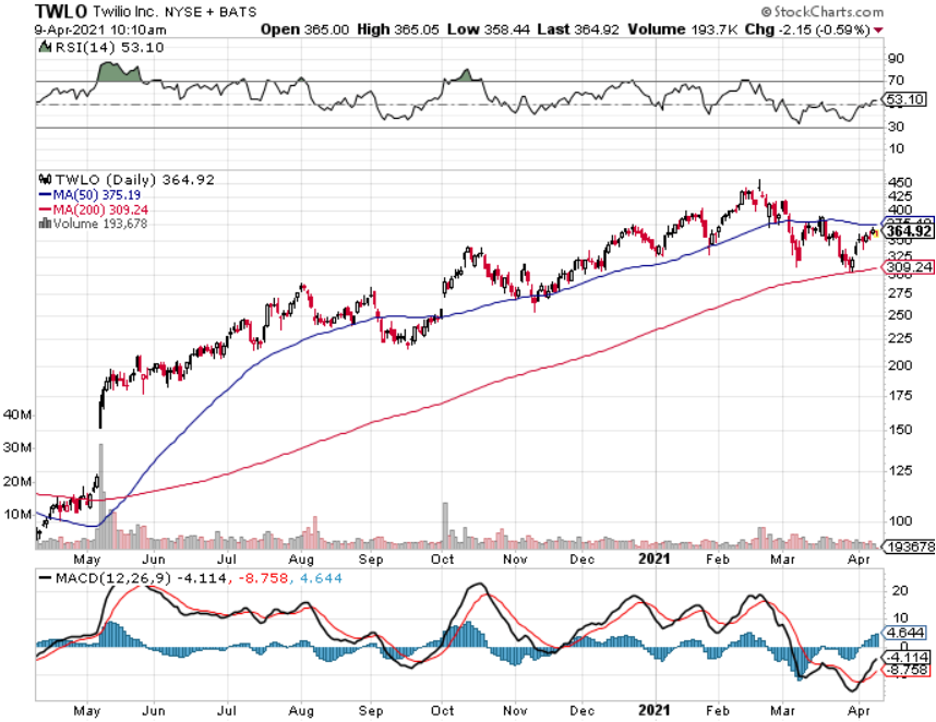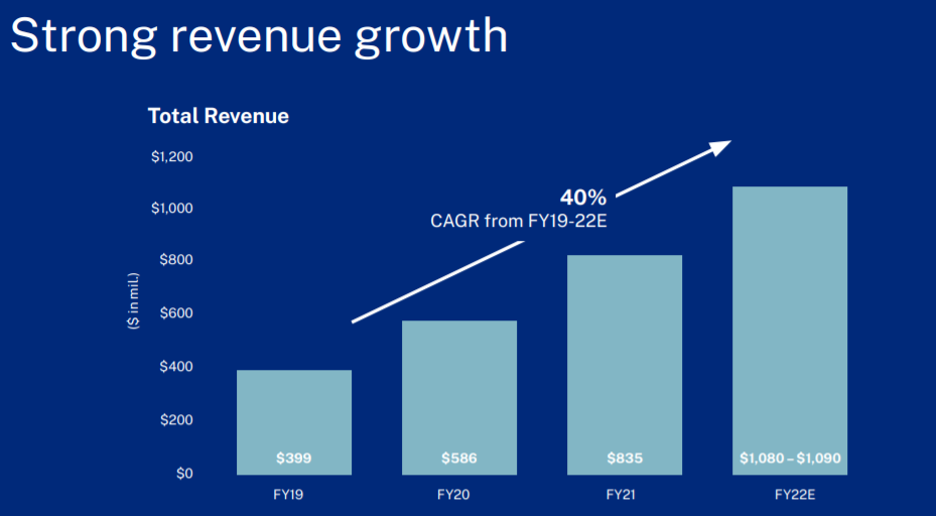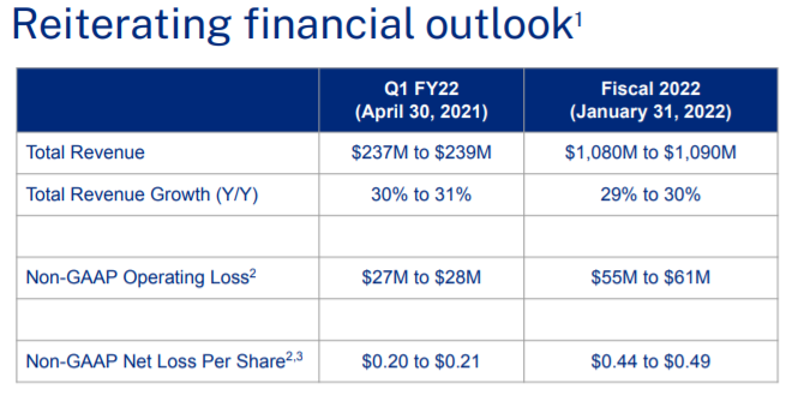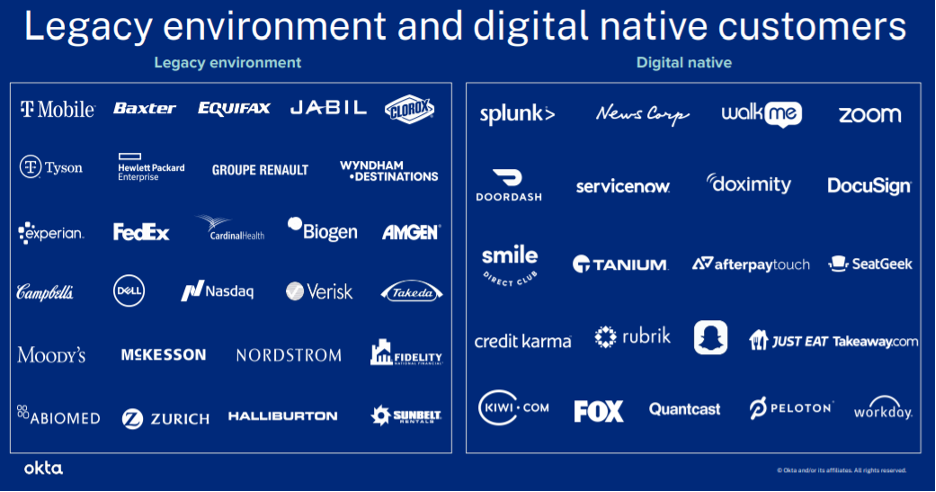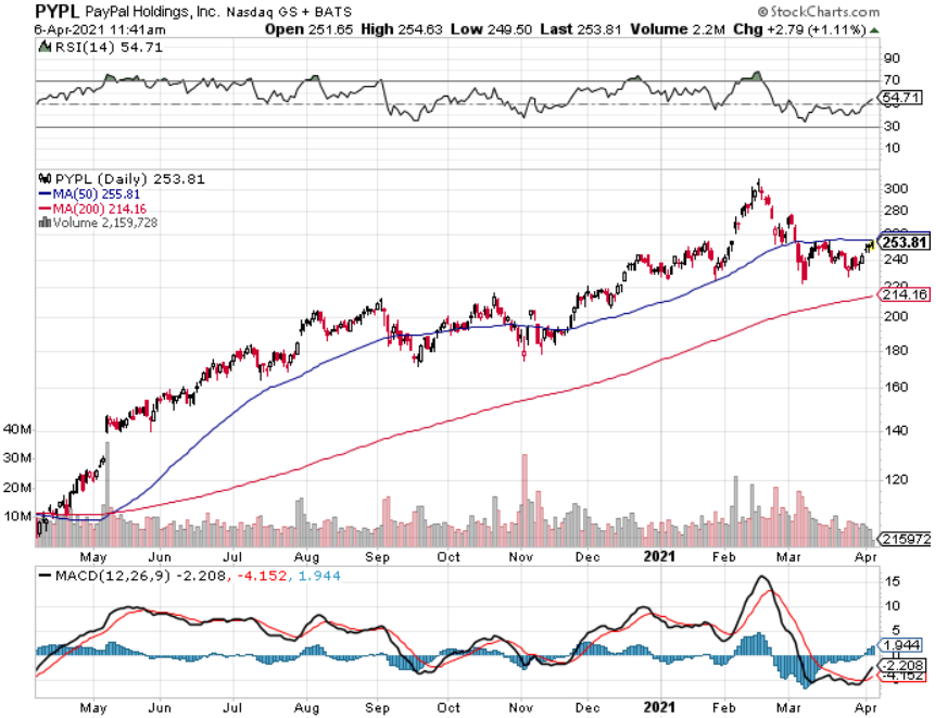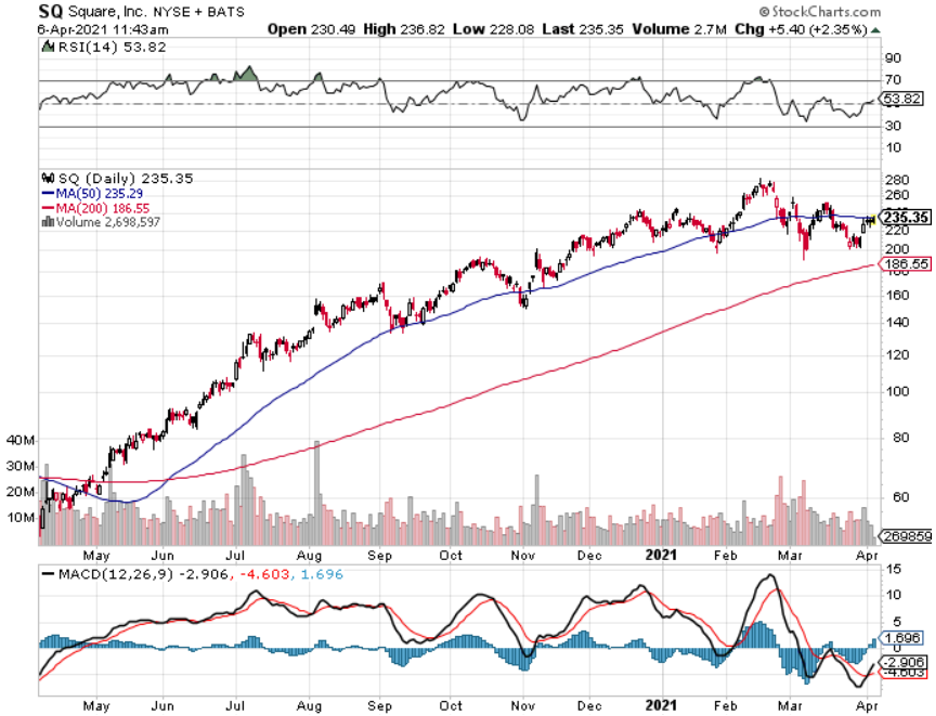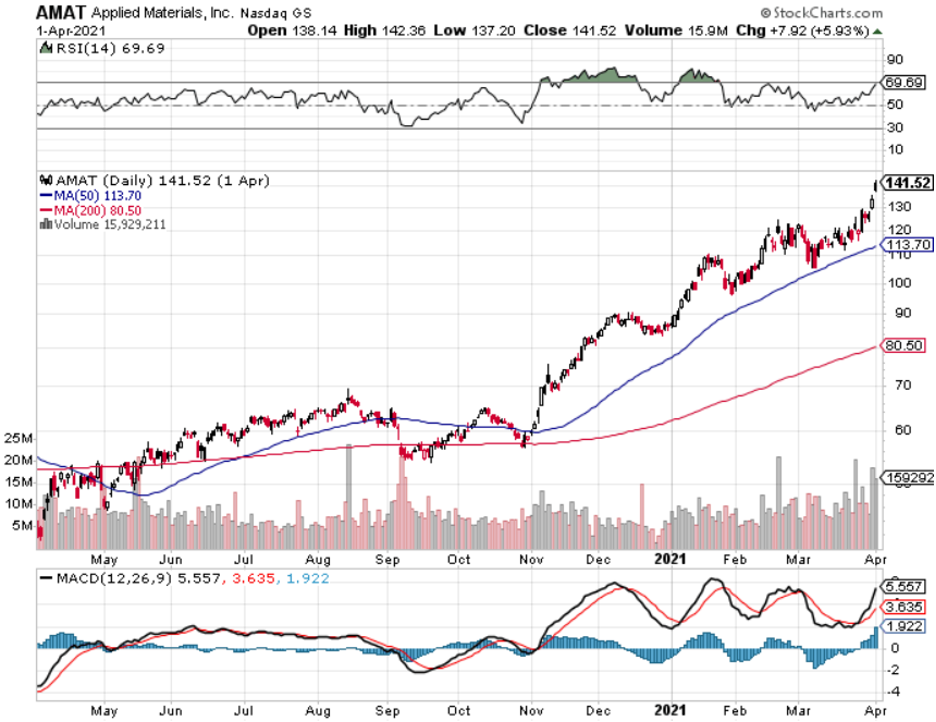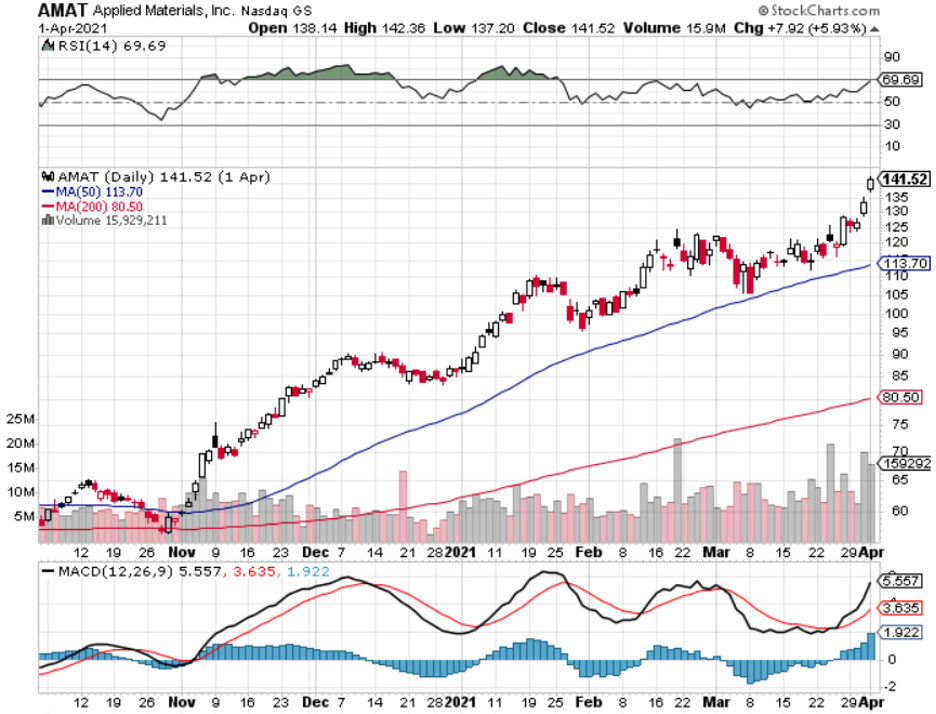“An asteroid or a supervolcano could certainly destroy us, but we also face risks the dinosaurs never saw: An engineered virus, nuclear war, inadvertent creation of a micro black hole, or some as-yet-unknown technology could spell the end of us.” – Said Founder and CEO of Tesla Elon Musk
Mad Hedge Technology Letter
April 8, 2021
Fiat Lux
Featured Trade:
(SHOULD I BUY CLOUD FIRM OKTA IN APRIL?)
(OKTA), (TWLO)
The excess liquidity fueling the U.S. financial markets signal that investors are picking up the tab for heavy loss-making tech companies like never before.
Only in the U.S. can this happen at the scale it is happening as the U.S. controls its own currency, Central Bank, and possess the most reliable IPO process.
This phenomenon effectively supports a mindset of tech start-ups putting off profits for years and sometimes even decades.
Too much money chasing too few ideas and we have seen numerous examples of this with investors turning to ultra-leverage to figure out how to deliver real gains to investors.
Another heavy loss-making cloud company that I recommended buying “at the bottom” last March was identity-verification software maker Okta (OKTA) whose business was dramatically uplifted from the shift to remote work during the pandemic.
The recommendation worked like a charm with the stock essentially doubling from the time of that call.
But what’s in store for this password company moving forward?
First, let's rewind to the beginning of March when investors dumped the stock after a disappointing 2022 forecast and suffered from rumblings of the company paying too much to acquire Auth0 for about $6.5 billion.
The 30% sell-off was another example of growth companies’ ugly habit of volatility making it hard to time the entry points for heavy pocketed investors.
In the most recent analysts’ day, Okta projected sales will grow 30% in each of the next three years.
Revenue at the end of fiscal 2024 will be close to an annualized $2 billion, or about $500 million for the fourth quarter that year.
Yes, this is still a small company by any metric.
Demand for the software maker’s products, which help workers access corporate systems and consumers authenticate their identity online, has increased as more employees logged on from home in 2020.
For the 12 months through March 1, Okta was used more than 52 billion times to log into an app or website, almost 200% growth from the same period a year earlier.
Okta has retraced some of its losses when it announced it introduce 2 new products.
One, Identity Governance Administration, generates reports which show in an organization who has permission to see which parts of its systems.
The idea is to make sure people who’ve left the company or have changed roles don’t retain access to unauthorized areas.
Next, Privileged Access Management, governs who can view and change an organization’s critical systems.
The new areas expand the size of Okta’s total addressable markets to about $80 billion.
Management said these protections have become more critical as employees continue to work for home.
Many data breaches come down to server accounts that weren’t locked down when they should have been.
Admins change jobs at a rapid pace as companies look to poach talent more than ever now.
If it wasn’t the cause of the breach, it was a vector that the attackers used once they got in.
Being the cloud growth company it is, with only a market capitalization of $30 billion, the new announcements was the catalyst for Okta shares to surge 8% during intraday trading.
This is typical growth company price action.
The company is also dogged by persistent rumors it might sell to a larger tech company and I would say it’s a little surprising that the company is “buying growth” at such an early stage of its growth cycle.
But again, the subsidies keep flowing to these upstart tech guys because liquidity levels and bold risk appetites allow these types of aggressive financing that affect management decisions.
Overpaying to grow is where we are now in the tech cycle with the Central Bank effectively not allowing this bull market to die.
Okta CEO Todd McKinnon said he wants it to be one of five or six independent software clouds that every company needs.
And I also want to be one of five or six men in the world that every girl in the world wants to date.
I get it that McKinnon wants identity and access to remain Okta’s specialty rather than being subsumed into one of the other categories. Microsoft, which has identity software products that predate its cloud businesses, is already Okta’s main rival.
I would agree that Okta is prime for investors to buy the dip, but I would recommend traversing to higher waters because there are better cash burning, cloud names out there that are growing faster than Okta.
Honestly, Okta should be growing more for its small size, and “buying growth” seems like they are worried about an imminent collapse of growth which is a worrying sign.
Yes, I must agree that competition is stiff these days in the cloud ecosystem.
My conclusion with Okta is that any investor looking to buy Okta should instead buy communications-as-a-cloud firm Twilio (TWLO).
This is the communications platform operating behind the scenes of behemoths like Airbnb and Uber.
They have a 3-year revenue growth rate of 66% and grew 65% year-over-year last quarter.
That is what I call consistent!
And that is what I call cash-burning growth!
TWLO is also exactly double the size of OKTA at $62 billion and is predicting next quarter to grow 44% to 47%.
According to IDC, investments in digital transformation will nearly double by 2023 to $2.3 trillion, representing more than 50% of total IT spending worldwide, and it’s clear to me that more of this capital will flow into TWLO than OKTA.
OKTA is just a one-trick pony, but TWLO is a complex integrated system that Uber can’t live without. Many companies can live without Okta and plug in a substitute. The revenue is just way stickier with TWLO, and the strategic position is superior.
OKTA is a solid buy the dip candidate, but just buy TWLO instead.
“Bitcoin will do to banks what email did to the postal industry.” – Said Founder of the Swedish Pirate Party Rick Falkvinge
Mad Hedge Technology Letter
April 7, 2021
Fiat Lux
Featured Trade:
(THE DISAPPEARING U.S. RETAIL STORE)
(SQ), (PYPL)
As vaccine shots hit a peak of 4 million on Easter Weekend, this means the return of the mall and retail, right?
Surely, a reopening bounce for retail is in the cards?
Think again.
A new report from a major bank suggests that 80,000 retail stores will close in the U.S. over the next few years.
This is not a wild guess or speculative bet on what will happen, this is starting to become a consensus.
By 2026, the worst-case scenario is 200,000 stores closing and by 2030, the worst-case scenario entails 300,000 stores closing highlighting the impactful nature of the situation.
As I took a fine-tooth comb to the latest earnings’ data, I can’t help but see that every tech CFO sees the accelerated digital transformation as one of the legacies of the pandemic.
But it will not be an invisible virus keeping shoppers away from the mall in the future, consumers are just satisfied with ordering from home and this economic behavior will become embedded in the new post virus world.
In 2020, 17 major retailers filed for bankruptcy – including Lord & Taylor, Century 21 and Brooks Brothers.
Countless are on the verge of defaults underscoring the pitiful shape of many retailers.
On the other side of the pandemic, blighted malls and unpaid rental payments is what will be left for much of retail.
Many of these malls won’t be able to rent out spaces for pennies on the dollar.
Many stores have gone 100% digital, even restaurants, that haven’t been able to offer dine-in options.
Online retail’s market share of the full retail landscape climbed from 14% in 2019 to 18% in 2020, and by 2025, that number will grow close to 30.
Average household spending online has grown the past five years from $5,800 to $7,100 from 2019 to 2020 highlighting how U.S. shoppers are increasingly comfortable ordering volume online.
Now armed with more stimulus money, I highly doubt there will be a renaissance in brick-and-mortar retail.
One possibility in the future is that many brick-and-mortar stores will double dip, both selling and fulfilling online orders from the same location.
Also, some goods simply aren’t made for click, order, and collect at home like shoes and dresses but others are such as home improvement, grocery, and auto parts.
The silver lining is awfully thin for the retail sector and odds are, if retailers don’t have a digital footprint by now, they are already toast.
The mall vacancy rate rose to 10.5% in the fourth-quarter 2020 from 10.1% in the third quarter and 9.7% a year ago.
This is unlikely to reverse in the short, medium, or long term and another concept for malls will need to be carefully thought out.
Considering further deterioration of non-digital retail, this should directly lead many investors to conclude that pouring money in ecommerce and fintech companies is the right thing to do.
It absolutely is.
The thesis for outperformance is so obvious that many tech investors need to seriously capture part of this sustainable megatrend.
On top of my list of fintech firms are Square (SQ) and PayPal (PYPL).
Square expanded sales 141% year-over-year last quarter and have been profitable for the past two quarters with EPS growing 39% year-over-year last quarter.
PayPal has a much bigger business meaning the law of numbers start to work against them.
They expanded sales 23% year-over-year last quarter and improved EPS by 30% year-over-year.
These two fintech stocks should be considered on every substantial dip because profitability increases have a clear path for the foreseeable future and the robustness of in-house products have not disappointed over time.
“You can’t stop things like Bitcoin, it’s like trying to stop gunpowder. It will be everywhere, and the world will have to readjust. World governments will have to readjust.” – Said Founder of McAfee Inc. John McAfee
Mad Hedge Technology Letter
April 5, 2021
Fiat Lux
Featured Trade:
(CHIP MANUFACTURERS — A WAY TO PLAY 5G)
(AMAT)
From every minor data point coming from the semiconductor industry, we are seeing a tidal wave of new demand that is fueling a new megatrend of accelerated chip consumption.
We, yet again, get more confirmation from tech firms that this revenue surge is real and is happening as we speak.
Chip equipment makers have to be the best bet in tech of 2021, and I will explain why.
We are experiencing an assortment of macro and technology factors fueling robust demand for semiconductors.
As the world continues to navigate a health solution, the digital transformation of the economy is moving into warp speed.
Companies are reformulating the way they operate, and there is a dramatic pull for advanced technology.
This advanced technology needs a high volume of chips.
Consumers are now making digital-centered choices about the way they spend their time and the products and services they buy.
The benefits cannot be ignored and since new ways of working offer compelling advantages in terms of time and productivity, they will be irreversible.
Here are three examples driving increasing silicon consumption.
First, cloud service providers are predicting data center capex growth of more than 15% this year on top of record spending in 2020.
Second, due to the broader adoption of 5G handsets, silicon content in smartphones is growing at double-digit rates.
Third, in automotive, where there are known supply shortfalls since 2018, chip consumption is expected to expand more than 15% this year, translating these factors to heavy industry investments.
The IoT, communications, auto, power, and sensor markets are expected to grow even faster and are on track to exceed $3 billion of revenue for 2021.
This past year was a strong recovery year with spending up more than 30% and is set to continue.
The result is a strong demand environment for wafer fab equipment, and we believe this strength is sustainable well beyond 2021.
Investors should be looking at wafer fab equipment companies like Applied Materials (AMAT).
When you look at wafer fab equipment intensities, that's wafer fab equipment revenues as a percentage of semiconductor industry revenues, they are well below recent peaks in all three of the device segments: foundry/logic, NAND, and DRAM.
I would recommend one of the most important U.S. wafer fab manufacturers Applied Materials (AMAT) in order to capture the sweet spot of the explosion in chip demand in 2021 and the need to satisfy this demand.
The supply isn’t there and these capital investments mean more building of capacity which is great for (AMAT).
(AMAT) revenues for the first fiscal quarter were up 26% compared to the same period last year.
At the midpoint of Q2 guidance, semi systems will be up around 50% year on year.
There are a number of factors contributing to this overperformance.
(AMAT) has the broadest portfolio of products and capabilities, spanning materials creation, modification, removal, and analysis.
These technologies, combined with their ability to connect in unique ways, are fundamental to enabling customers' power, performance, and cost road maps.
(AMAT)’s latest-generation products have strong momentum, and more than 25% of 2021 revenues will come from critical applications that they have targeted and won since 2018.
Also, over the past few years, (AMAT) started introducing a new class of highly differentiated products that are called Integrated Materials Solutions, or IMS.
(AMAT)’s IMS products can combine multiple process technologies with onboard metrology and sensors within a single system that is capable of enabling unique films, structures, and devices.
Over the past five years, they have grown IMS services business at a compound annual growth rate of 12%, which is twice as fast as (AMAT)’s installed base growth.
Their renewal rates for these agreements are also extraordinarily high at over 90%.
I also see encouraging leading indicators of future growth, including higher OLED adoption in the smartphone market with the vast majority of 5G handsets being equipped with OLED screens and increasing OLED consumption beyond phones in TVs and IT applications.
The manufacturing of more chip equipment will all culminate with (AMAT)’s share price demonstrably higher by the end of 2021.
We are at the beginning of a boom in the wafer fab investment cycle and companies such as (AMAT) will be outsized winners in this 5G economic cycle with major investments into chip equipment taking place in 2021.
“The next major explosion is going to be when genetics and computers come together. I'm talking about an organic computer - about biological substances that can function like a semiconductor.” – Said American writer, futurist, and businessman Alvin Toffler
Legal Disclaimer
There is a very high degree of risk involved in trading. Past results are not indicative of future returns. MadHedgeFundTrader.com and all individuals affiliated with this site assume no responsibilities for your trading and investment results. The indicators, strategies, columns, articles and all other features are for educational purposes only and should not be construed as investment advice. Information for futures trading observations are obtained from sources believed to be reliable, but we do not warrant its completeness or accuracy, or warrant any results from the use of the information. Your use of the trading observations is entirely at your own risk and it is your sole responsibility to evaluate the accuracy, completeness and usefulness of the information. You must assess the risk of any trade with your broker and make your own independent decisions regarding any securities mentioned herein. Affiliates of MadHedgeFundTrader.com may have a position or effect transactions in the securities described herein (or options thereon) and/or otherwise employ trading strategies that may be consistent or inconsistent with the provided strategies.




